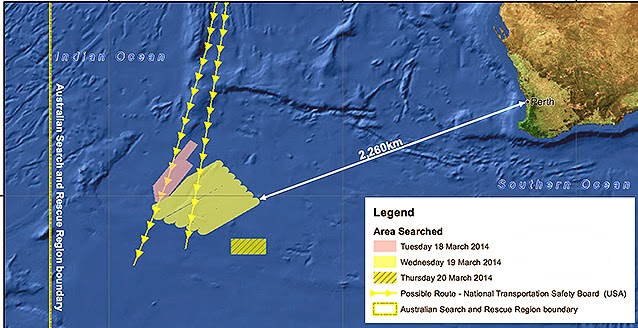On the long term issue of Australia's future submarine SEA 1000 project John Kerin of the The Australian Financial Review, March 6, 2014 reported
"An evolved Collins-class has emerged as the favoured option for Australia’s next generation of submarines amid signs the much maligned existing boats will remain in service beyond 2030.
The former Labor government’s defence white paper pared back the options to an updated Collins or a new design in its 2013 version, but all options are on the table for the Abbott government’s new white paper to be completed within 12 months.
Few sources close to defence believe it will opt for a new design given the risk of having an orphan boat class. Treasurer Joe Hockey is said to be uneasy with the mooted pricetag of $36 billion.
Defence Minister David Johnston has also cast doubt on whether Australia will double its fleet to 12, saying the number first mooted in the former prime minister’s 2009 white paper has never been justified.
The original Collins sub was a modified Swedish Kockums design and Australia would be unlikely to go without the expertise of one big European diesel submarine builder as well as rely heavily on the US Navy and its systems technology expertise.
One cause for optimism has been the amount of remediation work that has been undertaken on the Collins fleet since the release of the 2012 John Coles report by former defence minister Stephen Smith, which found the fleet was floundering but blamed most of the problems on poor maintenance practices and co-ordination between defence, the navy and submarine maintainer ASC.
Ironically, one reason behind the life extension program is that the hulls of the boats have spent so much time out of the water.
On a visit to the Techport precinct in South Australia, Senator Johnston was happy to report that the availability of the Collins-class boats was as good as it has been for a decade.
Johnston seems to have had a change of heart. When the former Labor government released its 2013 white paper, he said he wouldn’t “want to go back near Collins if it was the last thing on earth we had to do’’.
Prime Minister Tony Abbott, on the other hand, has always been more circumspect, saying while the Collins had its moments, it was a pretty effective piece of kit. The Australian Financial Reviewunderstands that means as many as four of the six boats would be kept in the water.
Some defence sources question the cost of keeping the boats in the water given they are ageing, even as other navies in the region update their fleets, often with cheaper off-the-shelf boats.
“There was talk before the election of the cost of keeping the Collins in the water approaching $1 billion a year and it is only going to get more expensive as they get older,’’ one defence source told the Financial Review.
“So it’s a question of how much the government is prepared to pay to keep them going,’’ the source added.
A NOSE IN FRONT
Australian Strategic Policy Institute analyst Andrew Davies said there was “still scope for a change of direction but the evolved Collins definitely has its nose in front at the moment’.
“The availability of the existing six Collins-class boats is actually ahead of the target and it appears the life extension program will see them through to at least 2030,’’ Dr Davies says.
The regional arms race includes not only the big players such as China and Japan, but also Indonesia, Singapore, South Korea and Vietnam.
Labor’s 2013 defence white paper retained its earlier target from the more ambitious 2009 document, to double the size of the fleet from six to 12, with the boat being larger than the Collins – 4000 tonnes as opposed to 3000 tonnes – and having greater range and endurance. The Coalition, though less enthusiastic, has eventually come around to the political reality that the new boats will be assembled in Adelaide at the government-owned ASC, given Australia has an indigenous submarine capability, and marginal seats in Adelaide would be at stake otherwise.
As with big ship projects, the work is likely to be spread across other shipyards around Australia.
A debate has raged about the appropriate approach to buying new submarines since the Australian Strategic Policy Institute report in 2009, which estimated it would cost $36 billion to design and build submarines in Australia compared with a $9 billion tag for buying smaller conventional submarines from Europe.
But the purchase of small conventional submarines was suspended after it was considered they simply were not suited to the seas Australian submarines operate in, or the roles which they undertake, which include eavesdropping on long-range patrols on large countries in north-east Asia.
An assessment by the Australian Industry Group has estimated the future submarine program could employ up to 5000 workers and 1000 Australian businesses, many of them small and medium enterprises.
However, the best signal about the Abbott government’s future intentions will be its upcoming commission of audit and just how much political skin and money it is prepared to invest in the risky project." ENDS
-
Pete












